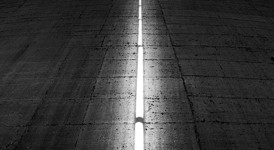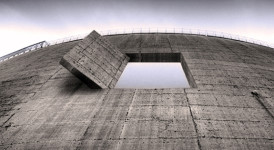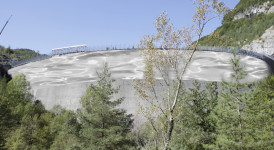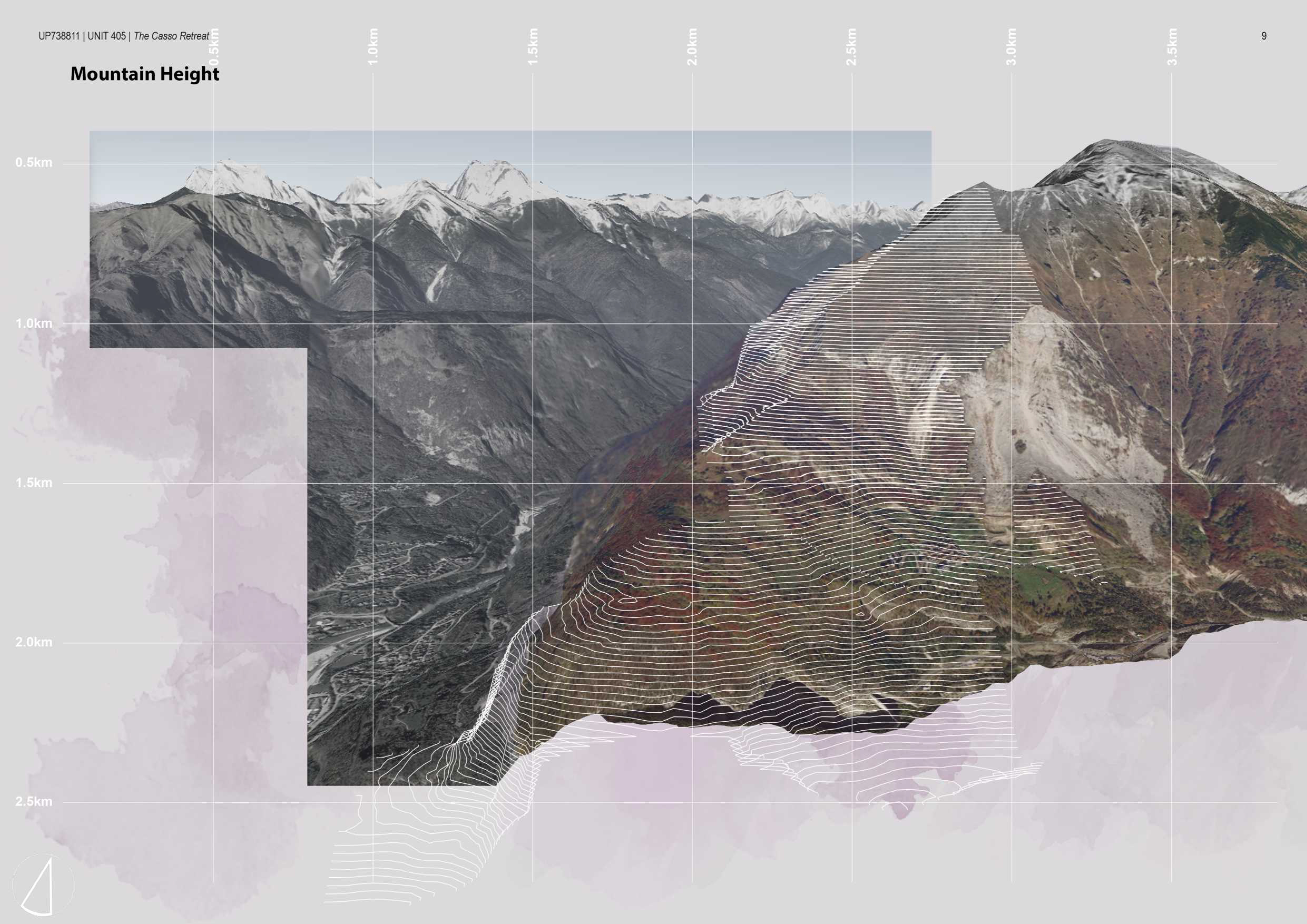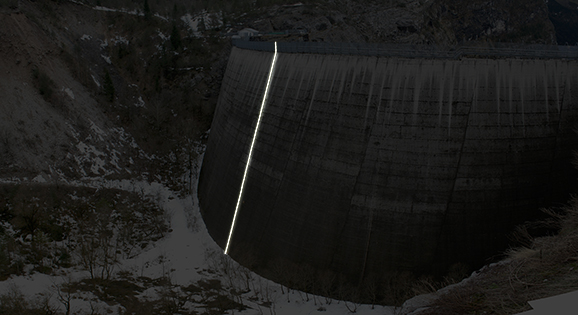
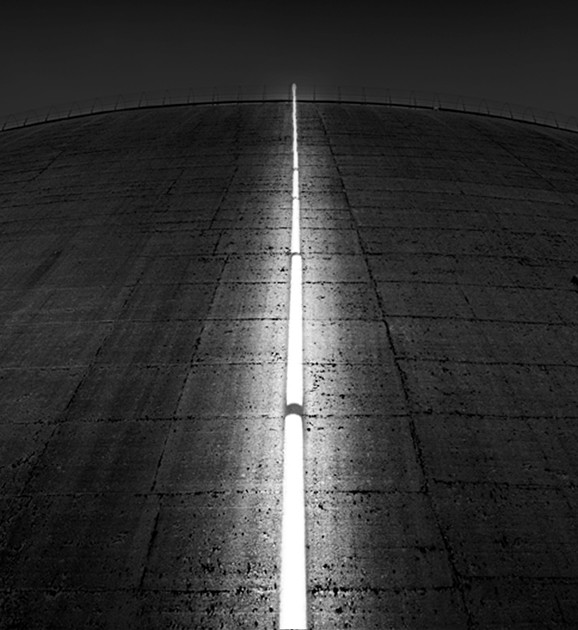
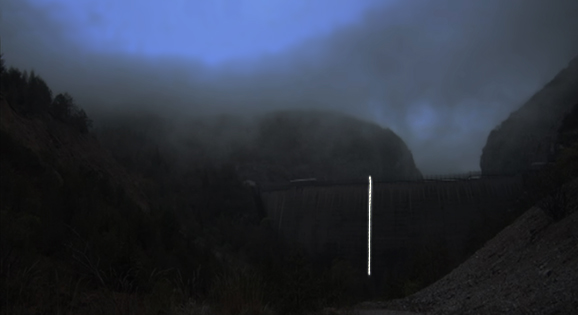

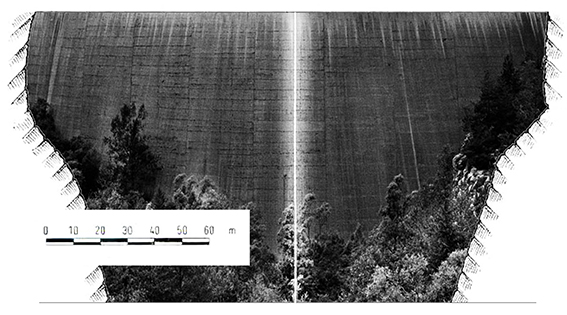
The Vajont Dam is a foreign element to the natural landscape in which it is swallowed, its presence is traumatic and intrusive. In the perception of those that survived to the tragedy in 1963, the dam represents the scar that never completely healed with the place, with the landscape, with the man and his survival instinct.
Especially after the disaster, the landscape has changed its natural development, it’s tight by the perceived of the unassailable horizontal limitation. Its presence imposes a limit in the perception, which is also a limit to the memory like a freeze-frame, a blocked memory. The boundary between earth and sky is paradoxically hidden and concealing from the visual boundary of the dam.
The project rotates the horizon on the surface of the dam, the line is stretched vertically along the length of the cement wall, through a sequence of single weatherproof fluorescent fittings 5 ft. long. The line lights up at nightfall, making it extremely visible from sunset to dawn, when the dam grows dark.
The marked landscape redefines its natural motion, it tracks an ideal rift on the valley, it is an overturning on the perception and on the memory, issues relating to the human cognitive processing about the re-elaboration of any event.
Jerry A. Fodor, philosopher of the language and cognitive scientist, defines the structure of the mind as functional architecture, he assumes two different workings: on one side the horizontal faculties whose ambition to legitimise the popular mentalist practice and on the other side the vertical faculties that help us to manage in the social world.
Materials: 68 single weatherproof fluorescent fittings 5 ft.
Installation: it will be necessary a suspended anchoring for installing the light fittings with wall plugs.
–
La diga del Vajont è un elemento estraneo al paesaggio naturale in cui è inglobata, la sua presenza è traumatica e invadente. Nella percezione dei sopravvissuti alla tragedia del 1963, la diga rappresenta la ferita mai sanata con il luogo, con il paesaggio, con l’uomo e il suo spirito di sopravvivenza.
Il paesaggio, soprattutto dopo il disastro, ha modificato il suo naturale andamento, serrato dalla percezione del limite orizzontale invalicabile. La sua presenza impone un limite nella percezione, che è anche limite alla memoria, la quale è bloccata in un fermo-immagine. Il confine tra terra e cielo è paradossalmente nascosto e occultato dal confine visivo della diga.
Il progetto ruota l’orizzonte sulla superficie della diga, la linea si stende verticalmente sul muro di cemento per tutta la sua lunghezza, una sequenza di plafoniere singole a LED stagne da 150 cm. La linea si illumina con il crepuscolare, rendendola profondamente visibile dal tramonto all’alba, quando la diga si oscura.
Il paesaggio segnato ridefinisce il suo movimento naturale, tracciando una spaccatura ideale sulla valle, un ribaltamento sulla percezione e sulla memoria, aspetti che hanno a che fare con i processi cognitivi dell’uomo nella rielaborazione di un qualsiasi evento.
Jerry A. Fodor, filosofo del linguaggio e scienziato cognitivo definisce in “the modularity of mind”, la struttura mentale come architettura funzionale, caratterizzabile in due differenti funzionamenti: quello orizzontale che ambisce a legittimare la prassi mentalistica popolare e quello verticale che ci aiuta a cavarcela nel mondo sociale.
Materiali: 68 plafoniere singole a LED stagne da 150 cm.
Installazione: sarà necessario un ancoraggio sospeso per l’installazione delle plafoniere con tasselli da muro.

 milano
milano
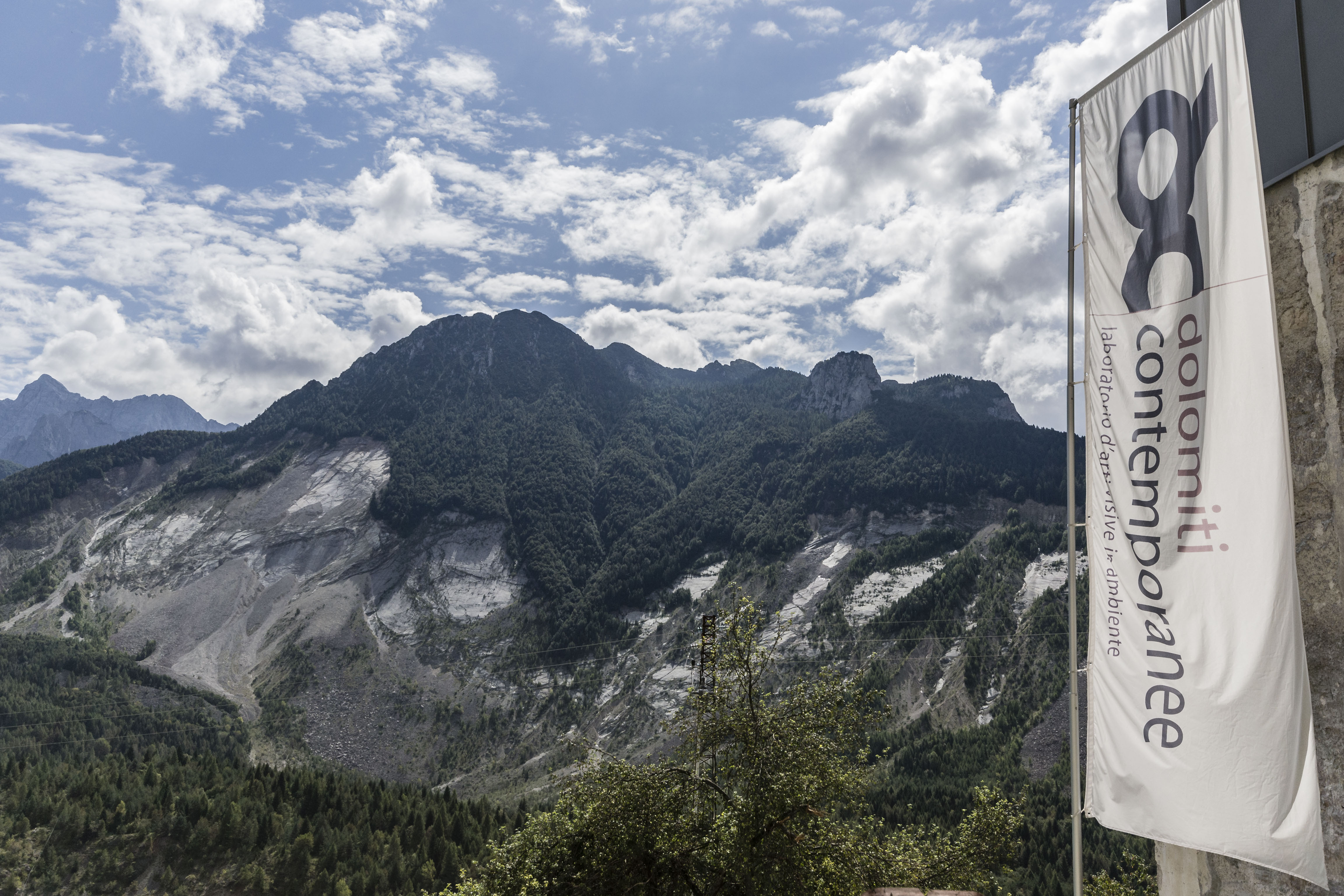
Tuesday, June 15th 2021, 2 – 4 PM, webinar panel:
two calls for vajont: fase _restart.
Vajont: [...]





